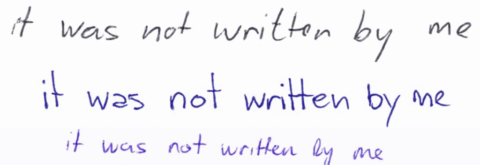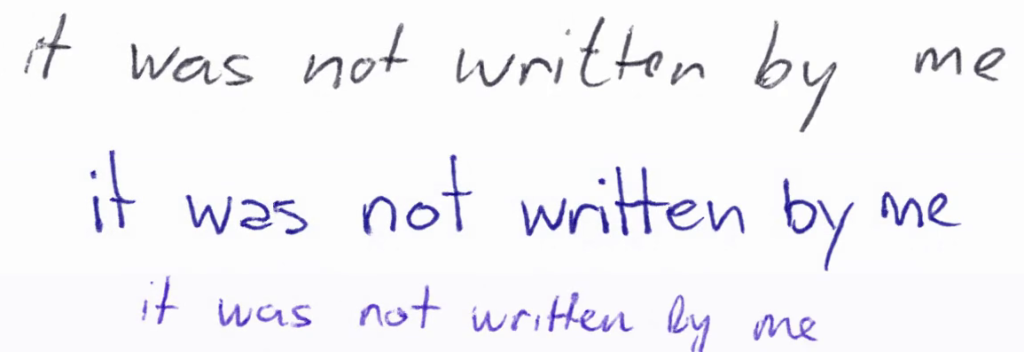Imitating handwriting with artificial intelligence
How can you enable people who are no longer able to write themselves to write a personal note or continue to write a diary in their own handwriting? A team of researchers at FAU have now developed a method for imitating handwriting using artificial intelligence (AI). The more legible the writing, the easier it is to imitate.
In order to imitate handwriting using AI, the researchers led by Dr. Vincent Christlein, Chair of Computer Science 5 (Pattern Recognition), break writing down into individual steps. The first step is known as skeletonisation, where the writing is reduced to a skeleton only one pixel wide. It is then transferred to an online sequence: like a digital signature on a tablet, a sequence like this includes temporal information, in other words when a stroke was made.
This information is then accumulated according to a determined schedule. The partial strokes in each line are identified and sorted from left to right according to their position. This is then followed by the writer style and image style transfer. First of all, the programme creates a new word skeleton in the same style and reverses the skeletonisation, before information from the writing sample such as line width in the word or the colour of the writing is transferred and small errors corrected automatically, resulting in a homogeneous style of writing.
Individual steps for mimicking handwriting developed by the team of researchers at FAU. (Image: arXiv: 1308.0850)
The team needs roughly five to seven paragraphs of the original writing sample to train the programme for new handwriting styles. Unlike other programmes which mimic handwriting, there is no need for interaction with the writer and it is not necessary to have a sample of all letters, as they can be derived using AI. The results are comparatively good when it comes to imitating handwriting for individual words – in a study, test persons were unable to identify which handwritten text was produced by AI. Other computer-assisted procedures which are able to identify handwriting were also unable to differentiate the original from the imitation in some instances.
The imitated lines of writing were not or only partially recognised as such by test persons and special computer programmes. (Image: FAU)
Dr. Christlein can imagine a variety of uses for the new procedure. It could help people who are physically not able to write themselves but would still like to write handwritten texts. Not only that, it could also be used to train programmes which can recognise historic writing. Until now, this has required significant amounts of writing samples, which are rarely available in such quantities in historical contexts.
Detailed information on the results is available on the website of the Pattern Recognition Lab and in the original publication.
Further information
Dr. Vincent Christlein
Chair of Computer Science 5 (Pattern Recognition)
Phone +49 9131 8520281


